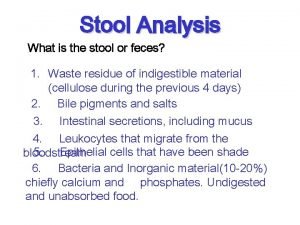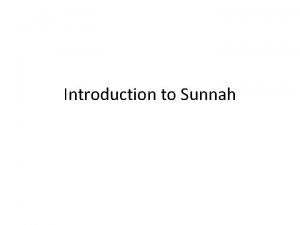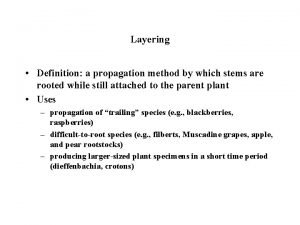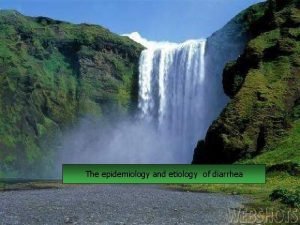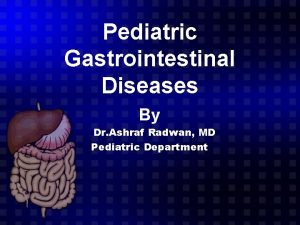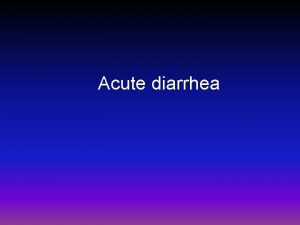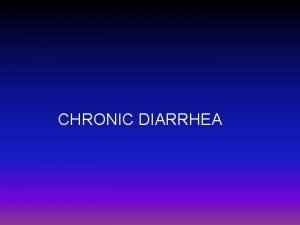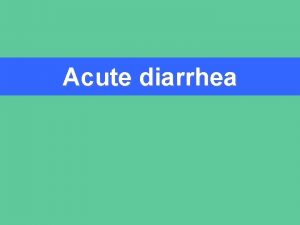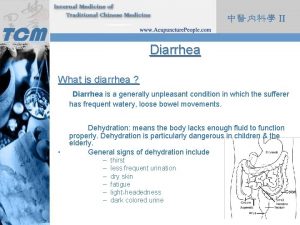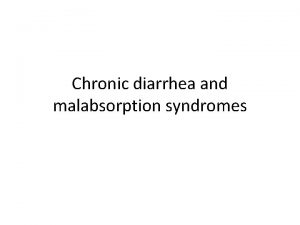DIARRHEA definition literally meaning throughflowing Stool looses its









- Slides: 9

DIARRHEA

definition διάρροια; literally meaning "through-flowing" Stool looses its normal consistence Weight usually increases: >235 g/d (♂), >175 g/d ( (♀) Frequency increases: >2/d Often associated with imperative urge to defecate Can contain blood, pus and mucous


Types of diarrhea Osmotic diarrhea: occurs when there is a loss of water due to heavy osmotic load, e. g. due to maldigestion or due to high uptake of sorbitol, fructose etc. Secretory diarrhea: due to increased active secretion and/or inhibition of absorption; little to no structural damage; e. g. cholera-toxin activates adenylatcyclase, higher c. AMP-level, decreased Na-absorption & increased Clsecretion, high osmotic gradient leads to waterinflow

Types of diarrhea Motility-related diarrhea: occurs due to abnormal motility of GIT, if food moves to quickly there is not enough contact-time for water & nutrients to be absorbed; e. g. after vagotomy or diabetic neuropathy Inflammatory diarrhea: damage of mucosal lining or brush-border leads to a passive loss of protein-rich fluids and decreased ability to absorb these fluids; features of the other three types can be found in this one; it can be caused by bacterias, viruses, parasites and autoinflammatory diseases

Acute diarrhea Lasts less than 4 weeks; aka enteritis Usually caused by infections (>90%) or food poisoning with bacterial toxins (Salmonella) Most of non-febrile diarrheas are caused by viruses (viral gastroenteritis); most common reason for diarrhea in children is Rotavirus (~40%) Febrile types (invasive pathogenes) are usually caused by Campylobacter or Salmonella Severe types are cholera, typhus and intestinal tuberculosis Cause for bloody diarrhea can be e. g. EHEC and dysentery

Chronic diarrhea Lasts longer than 4 weeks Reasons can be: stress, food intolerance (e. g. lactose intolerance), disorders of pancreas/liver/gallbladder, chronic intestinal infections (Morbus Crohn, Colitis ulcerosa), bowel cancer

Complications Loss of water: dehydration (dizzyness, unconsciousness) Loss of electrolytes: cramps In severe cases both can lead to death Worldwide 3 mio children die due to diarrhea (per year)

Treatment In case of severe diarrhea suckling babies, children, old people should always go to a doctor Most important is sufficient uptake of water and electrolytes (salt) Antidiarrhoetics are not always recommendable, cause pathogenes stay in the intestine In case of bacterial infection: antibiotics

